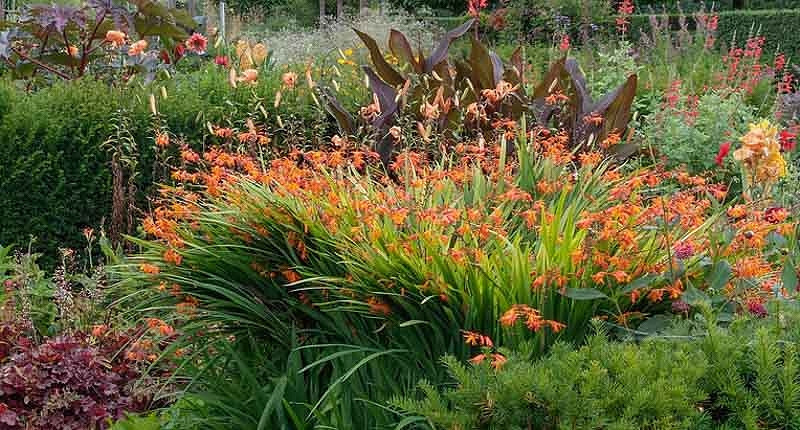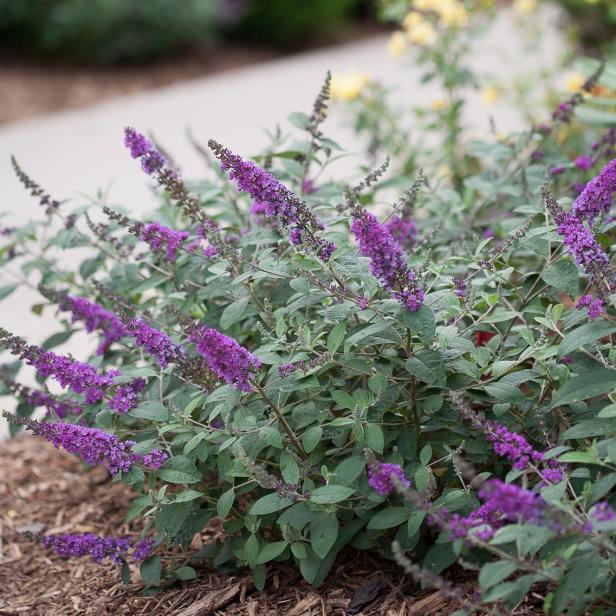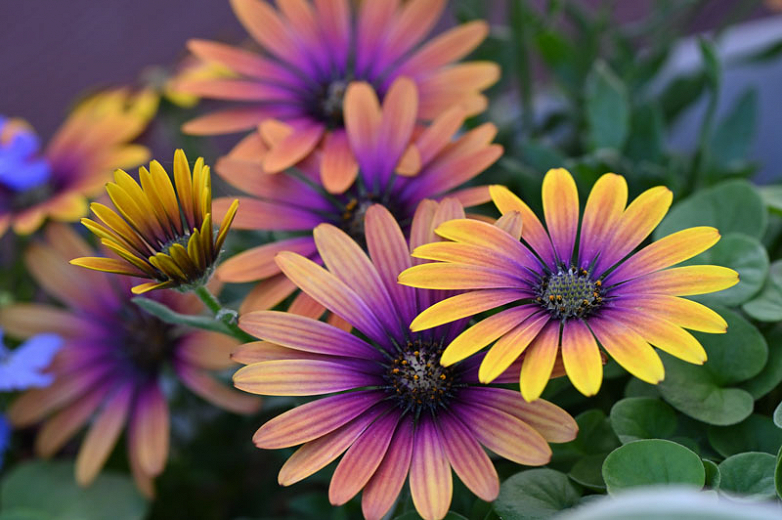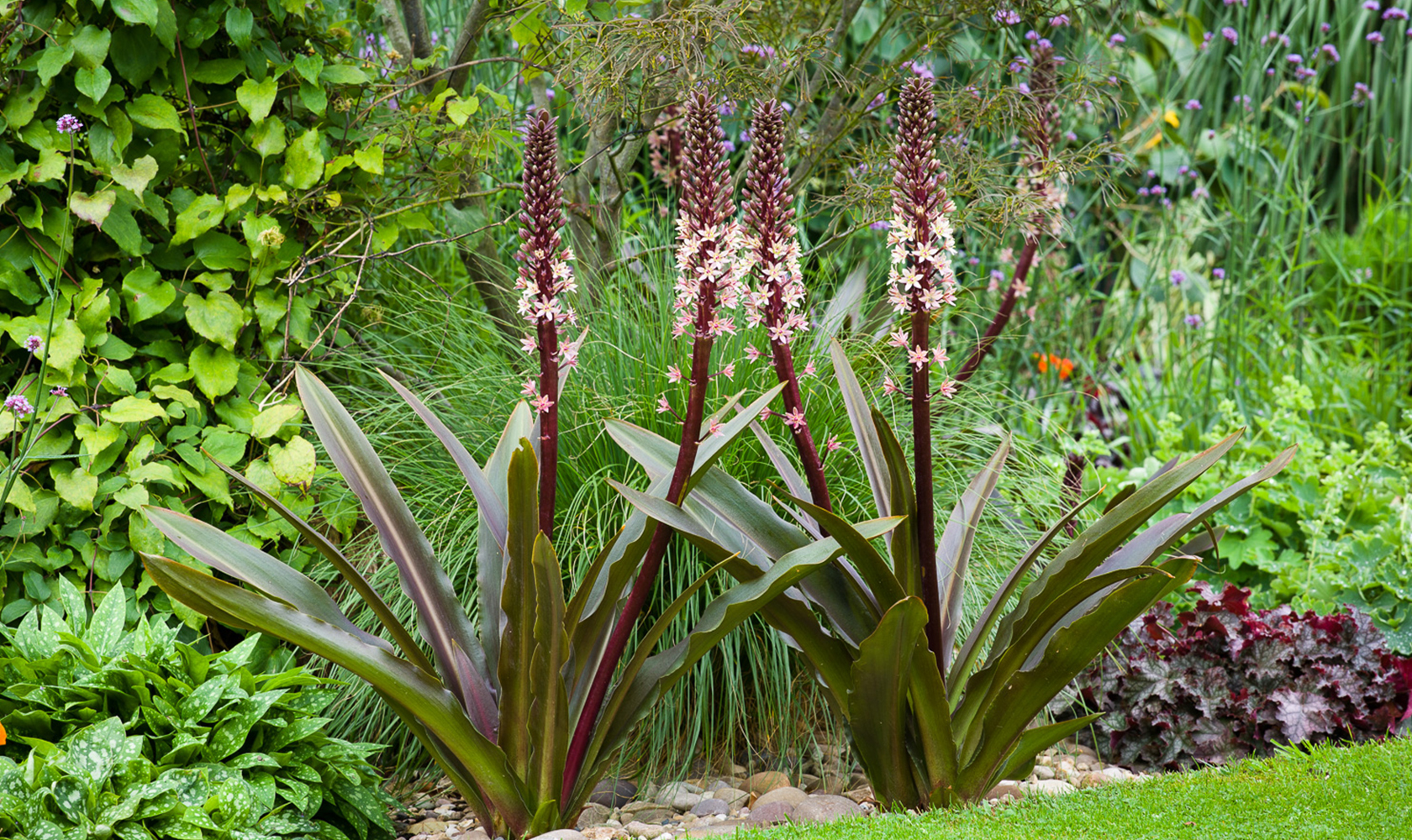Stunning Companion Plants For Agapanthus
Agapanthus, also known as African lilies, are beautiful perennials that can add a touch of elegance to any garden. They come in a variety of colors, including blue, purple, white, and pink. Agapanthus plants are relatively easy to care for and can thrive in full sun or partial shade.
One of the best things about agapanthus plants is that they can be used to create stunning companion plantings. When choosing companion plants for agapanthus, there are a few things to keep in mind. First, consider the size of the agapanthus plant. Some agapanthus varieties can grow quite large, so you'll need to choose companion plants that won't be overshadowed. Second, think about the color of the agapanthus flowers. If you have blue agapanthus, you might want to choose companion plants with yellow or orange flowers. This will create a striking contrast of colors.
Here are some stunning companion plants for agapanthus:
- Daylilies: Daylilies come in a wide variety of colors, so you can easily find a variety that will complement the color of your agapanthus flowers. Daylilies also bloom for a long period of time, so you'll enjoy their beauty all summer long.

- Iris: Iris plants also come in a variety of colors, and they offer a delicate, airy look that contrasts nicely with the bolder agapanthus flowers. Iris plants also bloom in the summer, so you can enjoy their beauty alongside your agapanthus.

- Alliums: Alliums are striking plants with spherical flower heads that come in a variety of colors, including purple, white, and pink. Alliums bloom in the spring, so they can add a burst of color to your garden before your agapanthus plants start to bloom.

- Crocosmia: Crocosmia is a summer-blooming plant with bright orange or red flowers. It is a good companion plant for agapanthus because it has similar growing requirements. Crocosmia is also relatively easy to care for.

- Lavender: Lavender is a low-growing plant with fragrant purple flowers. It is a good companion plant for agapanthus because it can help to deter pests. Lavender is also drought-tolerant, so it can help to reduce the amount of watering you need to do for your agapanthus plants.

- Ornamental grasses: Ornamental grasses add movement and texture to a garden. They can also help to fill in empty spaces around agapanthus plants. Some good varieties of ornamental grasses to consider include miscanthus, pampas grass, and fountain grass.

When choosing companion plants for agapanthus, it's also important to consider the overall look you want to achieve in your garden. If you want a formal garden, you might want to choose companion plants that have a similar shape and size. If you want a more informal garden, you can get away with mixing and matching different types of plants.
No matter what type of garden you have, there are sure to be some stunning companion plants that will complement your agapanthus plants. Experiment with different combinations until you find the look that you love.
Agapanthus are beautiful, long-lasting flowers that can add a touch of elegance to any garden. But did you know that they can also be even more stunning when planted with complementary companion plants?
There are many different companion plants that can be paired with agapanthus, but some of the best include:
- Ornamental grasses: Ornamental grasses add height and movement to a garden, and they can also help to disguise the agapanthus's fading foliage in the fall. Some good options include miscanthus, sedge, and fountain grass.
- Daylilies: Daylilies offer a wide range of colors and bloom times, so you can find the perfect ones to complement your agapanthus. They also have similar growing requirements, so they're a good choice for a low-maintenance garden.
- Lilies: Lilies are another great choice for companion plants for agapanthus. They come in a variety of colors and sizes, so you can find the perfect ones to match your garden's style. Lilies also have a strong fragrance, which can add a touch of sweetness to your garden.
- Crocosmia: Crocosmia is a summer-blooming bulb that produces bright orange or red flowers. It's a good choice for adding a pop of color to your garden, and it's also relatively low-maintenance.
- Yucca: Yucca is a drought-tolerant plant that can add a touch of tropical flair to your garden. It's a good choice for companion plants for agapanthus in hot, dry climates.
If you're looking for more ideas for companion plants for agapanthus, you can visit Gardenia Inspiration. This website has a comprehensive list of plants that can be paired with agapanthus, as well as information on how to plant and care for them.
FAQ of companion plants for agapanthus
- What are some good companion plants for agapanthus?
Agapanthus are beautiful flowering plants that can add a touch of elegance to any garden. They are relatively easy to care for and can thrive in a variety of conditions. However, choosing the right companion plants can help to enhance their beauty and improve their overall health.
Some good companion plants for agapanthus include:
- Daylilies: Daylilies are another type of flowering plant that loves full sun and well-drained soil. They come in a wide range of colors, so you can find ones that complement the color of your agapanthus.
- Alliums: Alliums are a type of flowering bulb that produces showy purple or white flowers. They are also relatively low-maintenance and can help to add height and interest to your garden.
- Hydrangeas: Hydrangeas are a popular choice for gardens because of their large, showy flowers. They come in a variety of colors, so you can find ones that match the color of your agapanthus.
- Butterfly bushes: Butterfly bushes are a type of flowering shrub that attracts butterflies and other pollinators. They are also relatively drought-tolerant, so they can help to fill in any gaps in your garden during the hot summer months.

- African daisies: African daisies are a type of flowering plant that is native to South Africa. They come in a variety of colors, including blue, purple, and white. They are also relatively low-maintenance and can help to add a touch of color to your garden.

- What are some things to consider when choosing companion plants for agapanthus?
There are a few things to consider when choosing companion plants for agapanthus. First, you need to make sure that the plants have similar water and sunlight requirements. Agapanthus need full sun and well-drained soil, so you should choose companion plants that have the same needs.
Second, you need to consider the size of the plants. Agapanthus can grow quite large, so you need to choose companion plants that will not be overshadowed. You may also want to consider the shape of the plants. Agapanthus have tall, upright stems, so you may want to choose companion plants that have a more rounded shape.
Finally, you need to consider the color of the plants. Agapanthus come in a variety of colors, so you can choose companion plants that will complement their color. You may also want to consider the time of year that the plants bloom. Agapanthus bloom in the summer, so you may want to choose companion plants that bloom at different times of the year to extend the flowering season in your garden.
- How far apart should companion plants be planted?
The distance between companion plants will depend on the size of the plants. For larger plants, such as agapanthus, you should plant them at least 3 feet apart. For smaller plants, you can plant them closer together.
It is also important to consider the shape of the plants when determining how far apart to plant them. If the plants have spreading roots, you will need to plant them farther apart to give them enough room to grow.
- What are some tips for planting companion plants?
When planting companion plants, it is important to amend the soil with compost or other organic matter. This will help to improve the drainage and fertility of the soil. You should also water the plants well after planting.
It is also a good idea to mulch around the plants. Mulch will help to retain moisture in the soil and suppress weeds.
- How do I care for companion plants?
The care requirements for companion plants will vary depending on the type of plant. However, most companion plants need regular watering, especially during the hot summer months. You should also fertilize them every few months with a balanced fertilizer.
In addition, you may need to deadhead spent flowers to encourage new blooms. And, if necessary, you can prune the plants in the spring to shape them and remove any dead or diseased growth.
Image of companion plants for agapanthus
- Ornamental grasses: Ornamental grasses add movement and texture to a garden, and they can also help to disguise the agapanthus's fading leaves in the fall. Some good options include miscanthus, fountain grass, and pampas grass.

- Rudbeckias: Rudbeckias are bright yellow flowers that bloom in the summer. They are drought-tolerant and deer-resistant, making them a good choice for companion plants for agapanthus.

- Goldenrod: Goldenrod is another bright yellow flower that blooms in the summer. It is also drought-tolerant and deer-resistant. Goldenrod can grow quite tall, so it is important to choose a variety that will not overwhelm the agapanthus.

- Crocosmia: Crocosmia is a summer-flowering bulb that produces bright orange or red flowers. It is a good choice for companion plants for agapanthus because it blooms at the same time and has similar growing requirements.

- Eucomis: Eucomis is a summer-flowering bulb that produces white or pink flowers. It is a good choice for companion plants for agapanthus because it blooms at the same time and has similar growing requirements.

Post a Comment for " Stunning Companion Plants For Agapanthus"